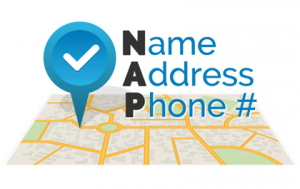
The Internet is awash with basic ‘how to’ articles about social media.
When you’re creating content, these basic guides will get you so far. (You need good content, a few social media accounts, and a featured image – you get the idea.)
But some of my clients wonder why these tips don’t work for them. It’s not because they’re doing anything wrong. They just haven’t thought their strategy through in enough depth. They’re ordering quality content from me, but they’re not joining that content up with anything else.
Even the highest quality articles won’t automatically attract shares and Likes, and getting traffic to an article is more difficult than posting it on WordPress and sharing it on Twitter. You need to have a plan in place, and you need to commit long-term to the success and growth of your blog.
Here’s a 7-step checklist to writing the kind of content that gets shared.
Create The Best Possible Content
Starting with the basics then. The first factor in getting shares is the quality of your content. That won’t come as too much of a surprise to anyone.
But what do we mean by ‘quality’?
- Come up with an original idea. The Internet is awash with articles about getting more followers on Twitter, for example; if you don’t have a radical new strategy, don’t write yet another article about the same thing.
- Hone the title to perfection. The title is the only section of your article that everyone will see. It’s the elevator pitch for the content and it needs to sell it well. For inspiration, look at the way the Huffington Post words its article titles.
- Don’t go crazy with keywords. Your content is for humans, primarily. The days of stuffing, anchor text links and keyword density are over. Choose one or two keywords, work them in naturally, add some long-tail keywords and go for some natural variations. If you’re a decent writer, this should come easily to you.
- Plan the article before you begin. Develop a logical flow to the content and flesh it out once the framework’s there. Aim take the reader on a journey from A to B via a route that makes sense.
- Check your facts. For example, in a ‘how to’ article, make sure the advice you’re giving is up-to-date and accurate.
- Check your grammar. If you’re writing for a professional audience, a misplaced apostrophe could lose you a reader right away. Grammar Party is a great resource.
- Keep it professional. No derogatory remarks about peers, clients, suppliers, or third parties.
Pay Attention To Style
Every writer develops their own style over time, but you’ll inevitably be influenced by the content you read. It’s important to try to set yourself apart from the crowd and impart some personality.
- There’s nothing wrong with being authoritative, providing you’re confident in your assertions and you really know your stuff. Writing about your niche will help you to develop an authoritative tone naturally.
- Is it appropriate to use words like ‘awesometown’ in your company blog? Is your content dense with corporate words like ‘solutions’ that don’t feel right? The tone you need will depend in your industry and audience; make sure you pitch it at the right level.
Structure Content For Easy Reading
Articles need to be laid out the right way to be appealing. Densely packed text is incredibly off-putting, so pay attention to your blog layout.
- Make your content scannable: introduce white space and larger fonts. We need white space to read comfortably.
- Use headings properly. There should only ever be one H1 tag on a page.
- Bullet out any content that lends itself to being bulleted. Likewise, number any steps that need to be carried out in a certain order.
- Always include at least one image. iStockPhoto offers images for free, and for just one credit; it’s not as expensive as you think.
Increase The Word Count
Although there’s technically no ‘best’ length for an article, it’s impossible to squeeze an authoritative piece into 300 words. Assuming you’re trying to produce quality content, you need quantity, too.
- If you have a limited budget, don’t be tempted to post short blogs so you can achieve a more frequent schedule. Spend your money on fewer, longer articles of a higher quality.
- The longer an article is, the more authoritative content it’ll include, and the more useful it’ll be as a resource. That means more incoming links, Likes, and shares.
- Use short articles only for news or current affairs (where your sole aim is to get short-term traffic).
Add Links
Blogging and linking go hand in hand, but linking is often abused. (I’ve lost count of the number of times I’ve been offered money to embed a link in a blog; naturally, I never, ever do it!)
Linking is a touchy subject in SEO, but stick to these rules and you shouldn’t go far wrong.
- Make sure all links have a purpose.
- Link to quality resources that complement your own content.
- Link naturally in the text; don’t engineer the anchor text.
- Don’t link keywords.
- Don’t hide links or sneak them in to copy under false pretences.
- Don’t include links you’ve been paid (or bribed) to include.
Check Your Blog And Hosting
Now your content’s done, it’s time to make sure your CMS and hosting is up to the job.
- Make sure your web hosting could cope with an increase in traffic. If an article went viral, what contingency plans are in place? Would your site disappear? If so, get a backup plan in place, or set up a CDN.
- Watch visitor behaviour in real time using a package like Lucky Orange. Tweak your layout to make it easier for visitors to find more content on the same theme.
- Use a service like Pingdom to make sure your server’s general uptime is good. There’s no point sharing content round the clock if your server’s going down when you’re not paying attention.
Share Your Own Content
Finally, it’s time to kick start the sharing process. This is always the tricky bit. Be prepared to invest a little time in getting the domino effect started; it takes more than one tweet to get traffic.
- Share content more than once on your own social media channels. For example, on Twitter, share in the morning and afternoon to see what works best.
- Share your content alongside other quality articles that your readers will enjoy; give it a context and put it in good company.
- Use a service like Buffer to experiment with different sharing times automatically.
- Make sure content is easy to re-share by placing social media buttons on every page.
- Spend time building a healthy following on social media: it makes the sharing part much easier.
Digital & Social Articles on Business 2 Community
(445)







